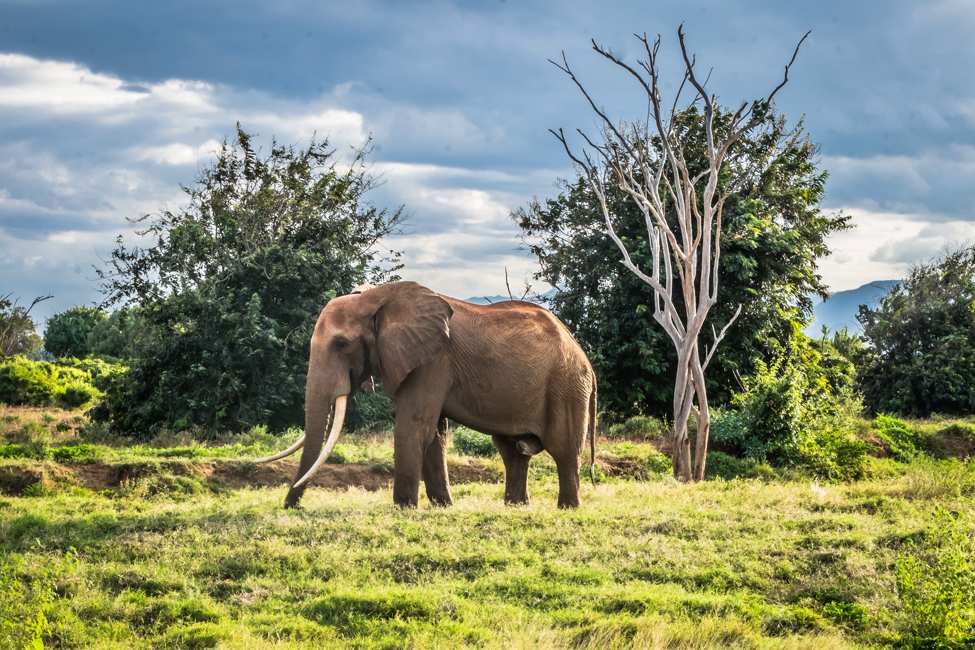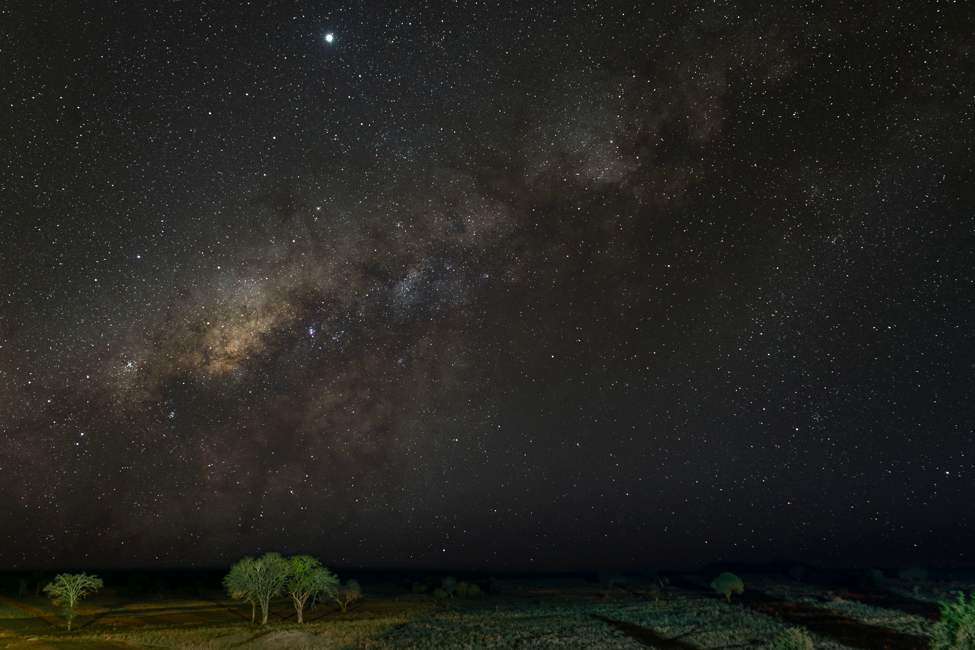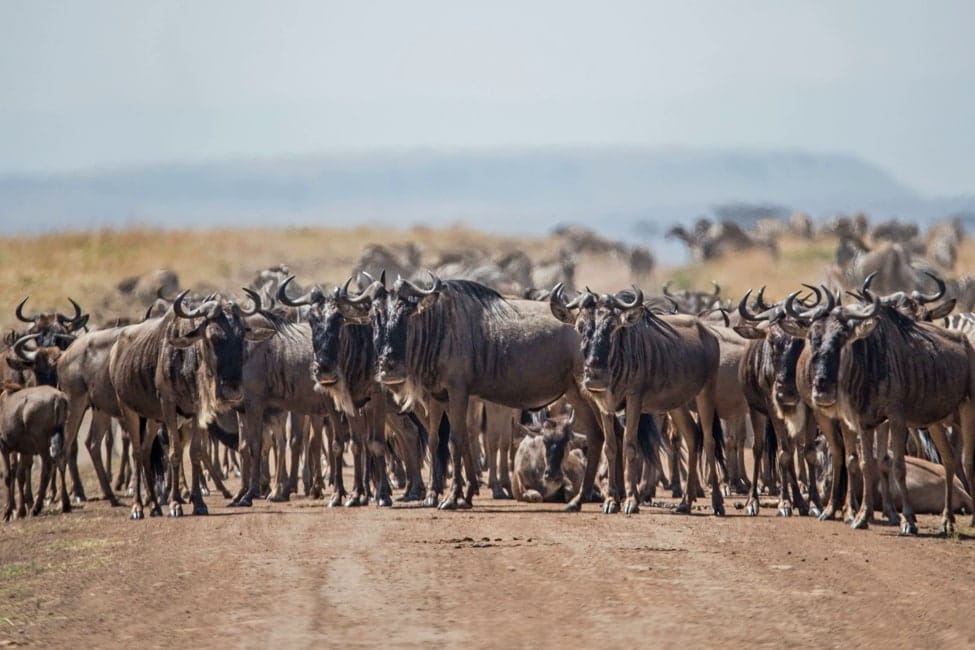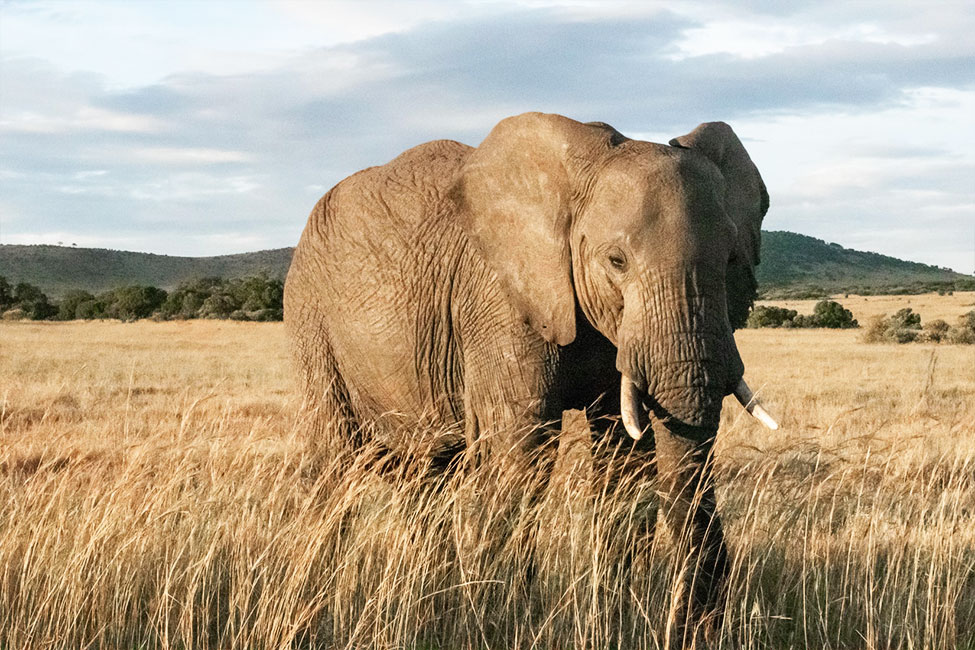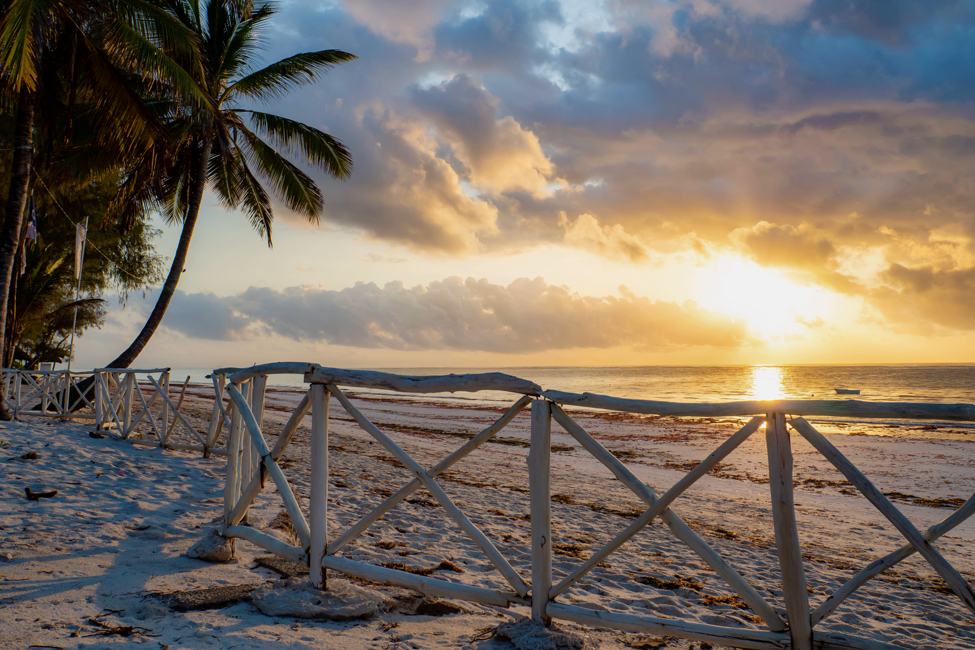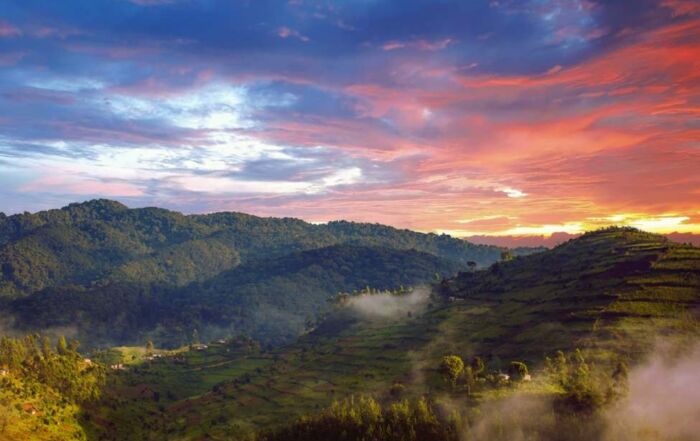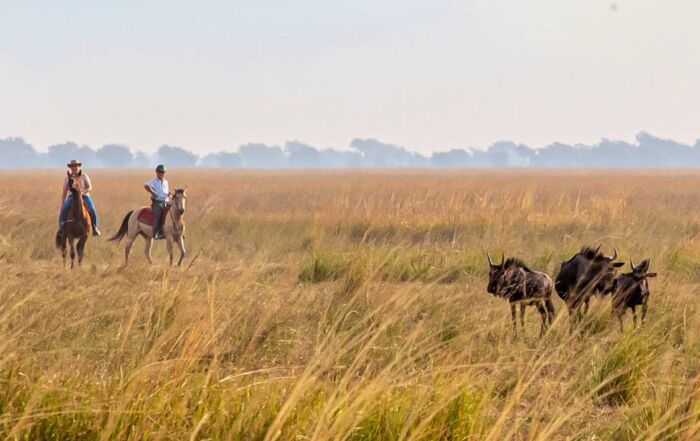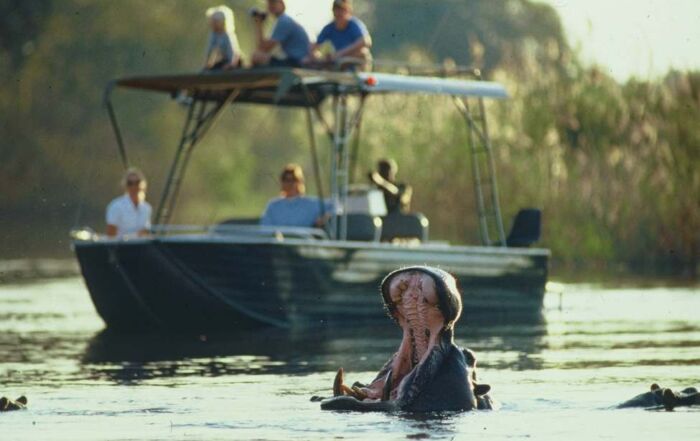Your Comprehensive Guide to Tsavo Conservation Area
Sprawling across 10,000 square miles in southern Kenya, Tsavo Conservation Area accounts for half the nation’s protected lands. It encompasses the neighboring Tsavo East and Tsavo West national parks, Chyulu Hills National Park, and several smaller, connected national and private reserves.
Tsavo Conservation Area is home to all of the Big 5, including 40 percent of Kenya’s elephants and about one-fifth of its black rhinos. Here, you can also see the rare Grevy’s zebra and Masai giraffe, as well as the hirola antelope with its lyre-shaped horns.
In this article, we’ll go over what makes each of the national parks unique. We’ll also discuss some of the nearby private conservancies and how they differ from the parks. Read on to discover which parts of the Tsavo Conservation Area are a good fit for your safari dreams!
Tsavo East National Park
Near Kenya’s coast, Tsavo East is one of Kenya’s oldest and largest national parks. Photographers flock to Tsavo East for its fabulous light and unbelievable views, especially of Mudanda Rock and the Yatta Plateau, made of 160+ miles of hardened lava. Lugard Falls, a series of whitewater rapids on the Galana River, is remarkable for the intricate, flowing shapes of its water-worn rocks.
Wildlife of Tsavo East
The animal life is even more outstanding. Watch elephants “bathe” by using their trunks to blow vivid red dust over their bodies. The clay dust soaks up oils and stuns insects, which the elephants then brush away by rolling in the grass or rubbing against brush.
Other animals at Tsavo East include rhinos, lions, leopards, crocodiles, waterbucks, kudus, Grevy’s zebras, and long-necked gerenuk antelopes. Tsavo East boasts more than 500 bird species, including ostriches and migratory kestrels and buzzards.
Tsavo East is huge and spread out, so the most popular way to look for animals is via game drives. At lodges and around the edges of the park, nature walks and hikes are also options.
Rescuing Elephants
Tsavo East is also home to the Voi and Ithumba Reintegration Units of the Sheldrick Orphans’ Project. This organization rescues orphaned elephants, providing them with the care and socialization they need to be successful in the wild. At Tsavo East, the orphans become integrated into herds. Guests at the Sheldrick Trust’s Ithumba and Galdessa eco-lodges can visit the reintegration units and see the orphans adapting to life in the wild.
Tsavo West National Park
Tsavo West is smaller and closer to the Tanzanian border, connecting to that country’s Mkozami National Park to the south. With nature trails, cave hikes, and the opportunity to explore the Chaimu Volcanic Crater, it’s excellent for visitors who enjoy walking. Boardwalks at Mzima Springs provide plenty of spots for watching bathing hippos. The scenery here is incredibly varied, ranging from mountains to river forests, plains, lakes, and wooded grasslands.
Wildlife of Tsavo West
Tsavo West has a huge variety of wildlife, including the Big Five, cheetahs, giraffes, plains zebras, crocodiles, dry-country antelope like lesser kudu and the fringe-eared oryx, and small mammals such as mongooses, hyraxes, tiny dik-dik antelopes, and porcupines.
However, animals tend to spread out, which can make spotting them more challenging. In addition, thick vegetation in parts of the park can obscure sightings. For first-time safari goers, we recommend combining a visit to Tsavo West with visits to more wildlife-dense parks like Tsavo East or Masai Mara.
Chyulu Hills: A National Park & Conservancies
The Chyulu Hills lie on the northwest border of Tsavo West and are characterized by lush, rolling hills and volcanic landscapes, the Chyulu Hills offer a cooler and more temperate climate compared to the arid savannah of Tsavo East and West. Caving is the main attraction at Chyulu Hills National Park, while private conservancies around the park offer hiking, horseback riding, and mountain biking in addition to game drives.
Wildlife of Chyulu Hills
In Chyulu Hills National Park itself, wildlife can be skittish and hard to spot. You are most likely to see giraffes, zebras, baboons, and some antelopes—perhaps klipspringer, mountain reedbucks, steinboks, or elands. The trees shelter an impressive array of birdlife, including African crowned eagle, cinnamon bracken warbler, white-starred robin, Shelley’s francolin, and orange ground thrush.
For easier viewing of large wildlife like eastern black rhinos, elephants, and lions, we recommend the private reserves on Chyulu Hills’ western slopes, such as Olpusare Conservancy and the Great Plains Conservation Reserve. Ol Donyo in the Great Plains Conservation Reserve of Chyulu Hills also offers a wildlife viewing hide for unobtrusively watching and photographing wildlife.
Explore Kenya on These Safaris
LUMO Conservancy
Community-managed LUMO Conservancy borders Tsavo West National Park and protects an important migration corridor between Tsavo West, Tsavo East, and Tanzania’s Mkozami National Park. While the conservancy is small, it offers a wealth of experiences—enjoy bush walks, birdwatching, daytime and nighttime game drives, and amazing views of the surrounding plains and hills. From the right spot, you may even see Mount Kilimanjaro!
Wildlife of LUMO Conservancy
LUMO Conservancy is particularly renowned for its populations of big cats and elephants. You can also expect to see a variety of other animals, such as Cape buffalo, lions, giraffes, zebras, hartebeests, leopards, impalas, waterbucks, Thomson’s gazelles, lesser kudus, dik-diks, and an impressive array of bird species. Nighttime game drives are a great way to see more elusive nocturnal animals such as porcupines, aardvarks, galagos, and possibly even a leopard on the prowl.
Photographers may wish to stay at Lion’s Bluff, which has a photographic hide for capturing incredible images of animals up close.
Community Connections
LUMO Conservancy is not a national park. Rather, it is owned and managed by the local Taita community to bring the benefits of ecotourism to local residents. While travel to the national parks also benefits local communities, the conservancy offers a more grassroots management approach to keep local residents more directly involved and create an array of economic opportunities for them.
Many of the LUMO Conservancy’s rangers are local Taita who pair traditional knowledge of the land with scientific expertise to bring guests to a deeper appreciation of the wildlife and ecosystem. In addition, lodge stays and other activities here fund local education, healthcare, and infrastructure improvements.
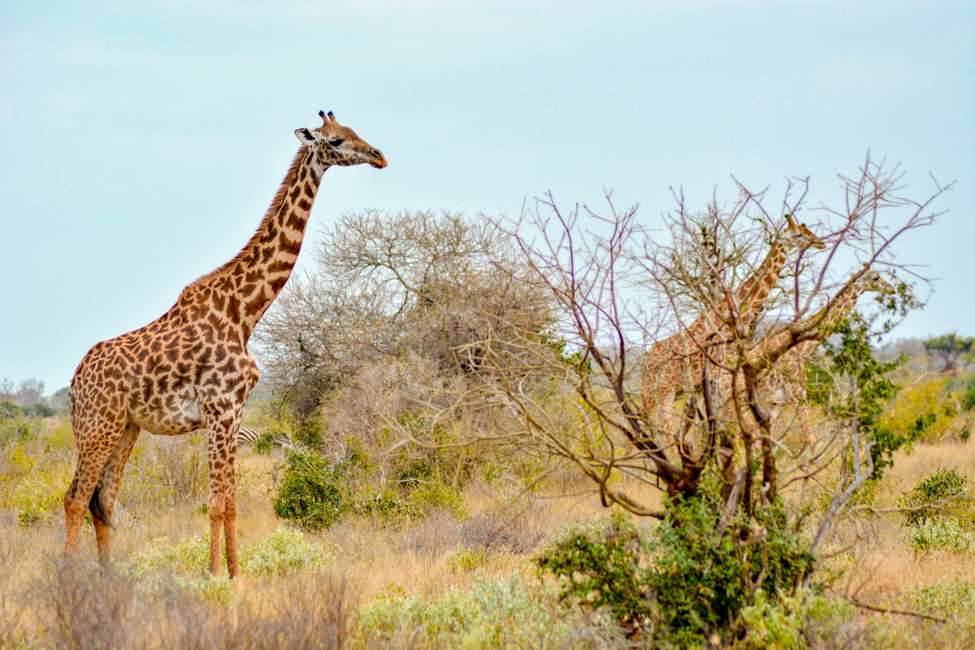
Tsavo Conservation Area is a great place to see Masai giraffes, a type of giraffe noted for pretty spots that have blotchy edges. Photo by Damian Patkowski.
Visiting Tsavo Conservation Area
Tsavo Conservation Area makes a memorable stop on a Kenyan safari. Tsavo East is accessible from Mombasa—about a 60-mile drive, while Tsavo West and Chyulu Hills are about 130–150 miles from both Mombasa and Nairobi. Most travelers arrive by road, but you can also take a chartered flight to save time.
When to Visit
Tsavo Conservation Area is accessible year-round. When to visit depends on what you want to do and see:
- Most travelers prefer the dry months: January, February, and June–October. It’s easier to spot most wildlife at these times of year.
- For birders, November to May feature higher species counts thanks to seasonal migrations.
- If you’d like to raft the Athi River on the border of Tsavo East—a three-day trip that combines calm waters with short sections of Class 2, 3, and 4 whitewaters—the high-water seasons of April–July and November–December are best.
Plan Your Safari
Tsavo Conservation Area is enormous, with many options for where to stay and what to do. For more information and help planning your trip, please schedule a call with Ujuzi. We’ll talk with you about what you want to see on safari and the types of places you’d like to stay, then make suggestions tailored to your tastes.
Sign up for the Ujuzi Newsletter!
From top travel tips to innovative safaris and conservation movement, get inspired to plan your next African safari!
By submitting this form, you are consenting to receive marketing emails from: . You can revoke your consent to receive emails at any time by using the SafeUnsubscribe® link, found at the bottom of every email. Emails are serviced by Constant Contact


